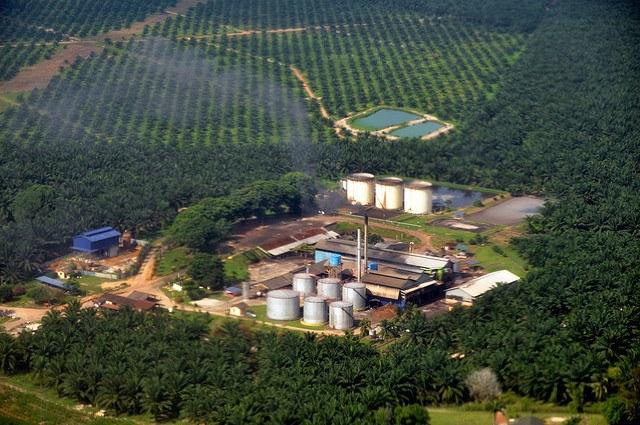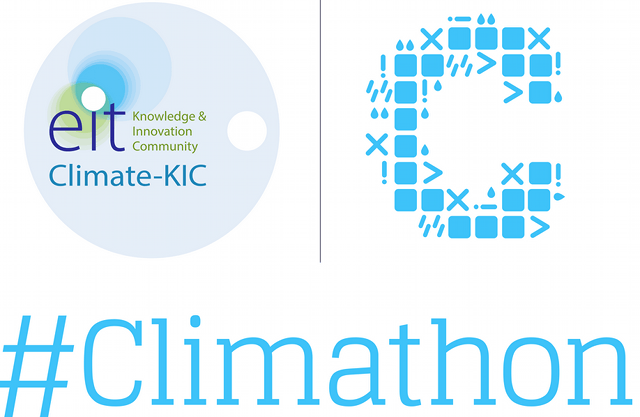Sustainable seafood top of menu for British restaurant chains


Fish2Fork and the Marine Conservation Society have joined forces to assess the sustainability of seafood sold at some of the biggest restaurant chains in the UK.
Using the only system that robustly measures the sustainability of the seafood served by restaurants, the partnership aims to get to a point where not a single restaurant in Britain serves threatened or endangered species of fish or shellfish.
Sam Fanshawe, chief executive of the Marine Conservation Society said: “Seafood is increasingly popular in restaurants, so never has it been more important to help chefs and diners make the right choices to protect our fish for the future.
"By combining our efforts, MCS and Fish2fork can inform many more restaurants of the latest advice on sustainable seafood based on the MCS Fishonline and Good Fish Guide ratings. Working together through the Fish2fork website and Diner Ratings, we can encourage a growing number of seafood lovers to support those restaurants that put sustainability high on the menu.”
Electronics Industry Slow to Move the Needle on Water


With headline-making historic droughts in California, Taiwan and other parts of the world, there’s no denying our current global water crisis. Yet, when it comes to how corporations are mitigating their water risks, some industries are quicker to respond than others.
“There’s a deafening silence in the electronics industry around water,” said Jason Morrison, director of the corporate sustainability program at the Pacific Institute. “The electronics industry has somewhat disowned water. It might be an issue for someone in their supply chain, but not their issue. There needs to be more ownership around water, and electronics companies need to use their influence to improve performance in their supply chains.”
Unlike other water-intensive industries like beverages and apparel, the global electronics industry has been slow to make innovative strides at scale that address water scarcity, pollution and weak water governance.
Water is a vital resource in the electronics industry, with the vast majority of the industry’s water footprint connected to the manufacture of semiconductors – those miniature electronic circuits with transistors that make our cell phones, laptops and cars function. For perspective: It takes approximately 2,200 gallons of water, including 1,500 gallons of ultra-pure water, to create one integrated circuit on a 30-centimeter wafer – and one computer can contain a multitude of those little wafers, or chips.
Beyond being water intensive, the electronics manufacturing process also produces toxic chemical-laden wastewater that can harm local ecosystems and communities if not discharged properly. This aspect of the manufacturing process is of concern to many, especially because most tech companies now manufacture their products in Asia and Pacific Rim nations, where lenient environmental codes prevail.
“A lot of companies have off-shored manufacturing, so there’s a need for electronics companies that are buyers of chips to really work with their suppliers and help them develop strong water management policies,” said Brooke Barton, senior program director of the water program at Ceres. “Today’s consumer doesn’t see environmental and water stewardship as ending at a factory’s gates – it really does need to extend to the supply chain.”
Organizations such as the Green Electronics Council, Electronic Industry Citizenship Coalition, Ceres, Pacific Institute and CDP are working with electronics companies to help them move the needle on sustainable water management practices.
Some companies, such as Intel, which was one of the first companies to sign the CEO Water Mandate, are proactively leading the industry in water stewardship, while the majority of the industry has fallen behind the curve in mitigating water-related risks.
“By the time companies get a topic on their radar ... they already have a crisis they have to manage,” Morrison said. “Most of the companies that take action on water, more times than not they have been burned by water, in the form of drought. When it’s related to cost in the supply chain, that’s when they move. The business case is pronounced when water is not around or prices spike – those companies tend to move quickly.”
Let’s hope mega electronics companies (and their suppliers) don’t have to wait for water conditions to get worse before they amp up their water stewardship efforts – and start talking about it with consumers. In the meantime, vote with your dollar by choosing electronics that are ranked against environmental standards like water stewardship and certified by a third party, such as EPEAT.
Image credit: Andrew Magill via Flickr
How Strong Are Commitments to Source Sustainable Palm Oil?


Many of the largest players in the palm oil industry have made commitments to make their supply chains more sustainable. But what do all these commitments really mean? Luckily, the Rainforest Action Network (RAN) can help us sort through it all with its latest progress report.
Titled Testing Commitments to Cut Conflict Palm Oil, the report ranks the strength of palm oil commitments made since the organization launched its Snack Food 20 campaign two years ago. The Snack Food 20 represents the largest corporate palm oil end users.
The palm oil industry is driving deforestation, climate change and human rights abuses. Over the last 18 months, many companies have issued commitments to source sustainable palm oil. The report finds some front-runners and some laggards within the Snack Food 20, which as a group grosses over $432 billion in revenue annually. That represents a potential global power, or as the report states: “Together the Snack Food 20 have the power, through engagement with their global suppliers, to drive a fundamental transformation in the way that palm oil is produced.”
"It is encouraging that many of the biggest players in the palm oil industry are beginning to accept their responsibility for the environmental and social crises they are contributing to, but for many communities and for the Sumatran orangutan, elephant, tiger and rhino, this is a race against time for survival,” Gemma Tillack, agribusiness campaign director for RAN, told TriplePundit.“To achieve the tipping point needed to truly change business-as-usual we need all actors on board –– including PepsiCo, Kraft Heinz, and the instant noodle giants Nissin Foods and Toyo Suisan –– and we need them to act now.”
Good news should come first, so let’s first look at the front-runners. These companies not only released responsible palm oil commitments, but also go beyond the standards of the Roundtable on Sustainable Palm Oil (RSPO), a certification often criticized for not going far enough. The strongest commitments include deadlines to eliminate suppliers that traffick conflict palm oil by the end of 2015, including Kellogg, Mars, General Mills, ConAgra Foods, Krispy Kreme Doughnuts and the J.M. Smucker Co.
The report also notes a wealth of laggards, including PepsiCo, Toyo Suisan Kaisha, Nissin Foods Holdings Co., Hillshire Brands Co., Grupo Bimbo, Kraft Foods, H.J. Heinz Co., Campbell Soup, Hormel Foods and Unilever. They lack either a responsible palm oil commitment or have a weak policy without adequate requirements for suppliers to stop destroying rain forests and peatlands and end human and labor rights abuses.
Now on to the really bad news. There are not true leaders among the Snack Food 20. What is a true leader? To earn these bragging rights, a company must “cut conflict palm oil from global supply chains by adopting and fully implementing a time-bound, responsible palm oil procurement policy,” according to the report, and can “guarantee to their customers that all their branded products, regardless of which country they are sold in, are free of conflict palm oil." Unfortunately, none of the Snack Food 20 meet this definition of a true leader.
How the FDA’s ban on partially hydrogenated oils may lead to more responsible palm oil sourcing
This week, the U.S. Food and Drug Administration finalized its decision to revoke the “generally recognized as safe” (GRAS) status of partially hydrogenated oils. The FDA is requiring food manufacturers to remove oils by June 18, 2018.
As Lael Goodman, an analyst in the Tropical Forest and Climate Initiative for the Union of Concerned Scientists, states in a blog post, the announcement “likely means an increased amount of palm oil (a trans fat-free vegetable oil) in the diet of Americans and an opportunity for companies to source only palm oil that is deforestation and peat-free.”
Simply put, as companies remove hydrogenated oils from their food products, they will likely turn to palm oil as a replacement. Hopefully, that will serve as an impetus to make the palm oil supply chain more sustainable -- although some fear it may have the opposite effect.
Image credit: Flickr/Marufish
Stimulate Sustainability By Closing the Generational Gap


By Anum Yoon
A desire for easy answers and a penchant for oversimplified generalizations: Contributors to the generational gap or roadblocks to the sustainability movement?
Both, in fact.
Much of the shortsighted, flawed thinking that helps maintain the generational gap also works to hinder the sustainability movement.
The big picture
No one can deny that there is a need for a big picture. The sustainability movement is still in the process of searching for a clear vision of the future. In order to motivate individuals, groups and corporations to large-scale change, there needs to be a clear picture not only of why we need a sustainable system, but also what such a system would look like.Unfortunately, a desire for a big picture can also result in dangerously narrow definitions that fail to reflect the larger reality. Such is one of the main issues of the generational gap.
People long to understand each other. People also long for shortcuts to understanding each other. Each attempt to cultivate a list of defining characteristics for the generations – baby boomers, Generation X, millennials – is another misguided endeavor to find a relational shortcut.
The problem with these lists is that they inevitably create a restrictive box that reduces each generation to a handful of traits. We know from attempts to generalize people by gender, astrological signs, Myers-Briggs personality types, hair color, skin color, eating habits or any other arbitrary marker that the resulting stereotypes actually prevent us from understanding one another, instead of aiding understanding.
Why bridge the gap?
That perhaps begs the question: Do the generations need to understand each other?Yes and no.
Yes, there needs to be a measure of understanding across the generations. This understanding is needed for the simplest of reasons: cooperation. In order to find a working, successful solution to any issue, a measure of cooperation is needed. The older generation needs to respect the fresh ideas of the younger. The younger generation needs to respect the life experiences of the older.
We need a measure of understanding because the different values and characteristics of each generation are needed to provide a diversity of perspectives that will facilitate greater problem-solving.
However, understanding the generations is not necessary. This is because creating generational boxes and attempting to define each generation by the ways it is different from or incomprehensible to another generation is unhealthy and unproductive. It reinforces the idea that uncontrollable factors – like when a person is born – create insurmountable differences between people.
These boxes create the harmful illusion that every member of a generation is the same. All millennials are entitled or all boomers are technologically challenged. The truth is that every individual is unique. Attempting to understand an individual by applying generational stereotypes only ensures a failure to understand that individual.
It is individuals, not stereotypes, that need to work together – bridging the generational gap – to create a sustainable future.
Small steps
Small steps can make a big impact on both the generational gap and sustainability movement.The generational gap will only be bridged through individual relationships. Rather than shaking heads over differences from a distance, individuals of all generations need to put effort into expanding their social circles. Millennials should visit their grandparents or volunteer at nursing homes. Boomers should reach out to their grandchildren or find ways to mentor and encourage millennials.
Getting to know members of other generations will encourage open minds and greater cooperation. Comments or suggestions from a member of one generation will no longer be heard as a statement representative of an entire generation, but rather be heard as the suggestion of an individual speaking from his or her unique experience.
Large-scale change and long-term solutions are needed both for bridging the generational gap and the success of the sustainability movement. While everyday choices and individual relationships will go a long way toward improving both issues, the generation gap must be dismantled in order for sustainability to have a fighting chance. Let's stimulate sustainability by closing the generational gap and collectively strive towards a better future.
Image credits: Unsplash - Calvin Chin
Anum Yoon is a writer who is passionate about personal finance and sustainability. As a regular contributor to the Presidio Graduate School’s blog, she often looks for ways she can incorporate money management with environmental awareness. You can read her updates on Current on Currency.
Report Confirms: 2015 Is (Yet Another) Big Year for Solar


New solar energy installations will grow faster this year than previously expected, according to Mercom Capital, which will make 2015 another strong year for the global solar market.
Releasing an update to its 2015 solar market report, Mercom predicts new installations will reach 57.4 gigawatts worldwide in 2015.
New market data from China, along with revised installation goals, prompted the upward revision, Mercom Capital Group co-founder and CEO Raj Prabhu explained in a press release.
The Austin, Texas-based market research, consulting and communications company also revised its 2015 forecast for new solar installations in India upward. Fueled by a renewed drive on the part of Prime Minister Narendra Modi's government, some 2.2 GW of new solar capacity will come online across India this year, Mercom predicts.
The geography of new solar installations
China, Japan and the U.S. will account for around 60 percent of new solar installations this year, according to Mercom. China again raised its 2015 solar target by 20 percent, to nearly 18 GW, since Mercom made its previous annual forecast three months ago.
“With the specific steps put forward by the [China] National Energy Administration (NEA) and the 5 GW already installed in the first quarter, 17.8 GW is a more achievable target this year,” Prabhu was quoted as saying. “Omission of a specific installation target for distributed solar projects, which contributed to missing the 2014 goal, is a positive."
China raised its solar installation target several times last year. Mercom expects it will do the same in 2015 if installation issues crop up on the ground.
Solar grows in Japan and the U.S., slides in Germany
Japan will continue to be a leader in new solar installations in 2015, Mercom predicts. With the Ministry of Economy, Trade and Commerce (METI) having reduced solar feed-in tariff (FiT) rates this past March, Japan expects to install around 10 GW of new solar capacity this year.
An ongoing ratcheting down of solar FiT rates will continue to dampen solar energy installations in market-leading Germany. Some 400 megawatts of new solar power capacity came online in Germany during the first four months of 2015, as compared to 622 MW in the same period a year ago. Mercom predicts a total 1,300 MW will be installed across the country in 2015.
Highlighting the marked difference between U.S. and German solar incentives, residential photovoltaic installations have been the main growth driver of German solar energy capacity. Rather than an FiT, as is used in Germany, the U.S. relies on investment and production tax credits. That's resulted in utility-scale solar energy development being the predominant driver of solar energy deployment in the U.S.
That said, Germany conducted its first auction for utility-scale solar in April as it looks to identify a cheaper alternative to its solar FiT. With a proposed 150 MW up for bid, the auction was four times oversubscribed, Mercom notes.
With awards being made to the lowest bidders, the average cost for Germany's first utility-scale solar auction turned out to be slightly more expensive than it would have been under the FiT model, according to Mercom. With a second auction slated for August, the market research company expects the program will be modified in 2016.
Here in the U.S., Mercom predicts a total of approximately 8.8 GW of new solar power capacity in 2015. New installations are expected to reach new highs this year and next in advance of a scheduled scaling back of the federal solar ITC at year-end 2016.
The U.S. has been a leader when it comes to developing innovative ways of financing solar energy deployment, such as third-party solar leasing and loan programs, the formation of tax-advantaged yield companies (“yieldcos”), and securitization of pools of solar loans and leases, Mercom points out.
“In the first half of this year, third-party solar finance companies have raised almost $3 billion dollars in lease and loan funds, on course to make this the best fundraising year for solar lease companies. As the ITC expiration draws closer, we expect this activity to strengthen in 2016,” Mercom writes in its latest annual market report.
Surge in U.S. corporate solar investments expected
Santa Barbara, California-based Wiser Capital says corporate investment in small- to mid-size American solar projects is poised to soar. Released on June 16, Wiser Capital's 2015 Solar Investment Index report reveals that more than 60 percent of managers with influence over corporate investments intend to put company capital to work by investing in solar energy in the U.S. OnePoll carried out the research on behalf of Wiser.
Furthermore, a third of corporate managers surveyed said their companies would make their first solar energy investments within the next year. Looking out over the longer term, no less than 83 percent of the 100 corporate managers surveyed said their commercial organizations will make investing in the solar energy sector a priority by 2020.
Aside from addressing climate change and environmental degradation, the potential to earn comparatively high, stable and longer-term returns on investment (ROI) is a primary motivating factor for U.S. corporate investors, Wiser Capital highlights in a press release.
International trade disputes surrounding Chinese solar photovoltaic exports cloud attempts to accurately gauge and forecast the amount of solar energy that will be installed worldwide, Mercom points out. Following the imposition of punitive import duties in 2014, the EU has opened an investigation into EU imports of Chinese PV panels from Taiwan and Malaysia.
In addition, the EU is reviewing the current minimum import price established for Chinese PV panels as a result of an agreement with the Chinese government last year. Due to expire in December, the EU recently imposed tariffs on three solar companies for violating the agreement, Mercom notes.
*Image credits: 1) Flickr/Jason Morrison; 2), 3) Mercom Capital
China Pilots Its First National Park System


In an effort to promote its vast, beautiful landscapes, the Chinese government announced a plan for the country's first national park system earlier this month.
Chinese officials will set up trial national parks throughout the country for the next three years on an American-influenced initiative. Officials will study the U.S. park system as a cornerstone example of how a country can benefit both naturally and economically from creating national parks.
China, the world’s most populous nation with 1.4 billion people, deals with major air pollution control issues, particularly in urban areas where the dense cities and power plants create a powerful and dangerous smog. With a population that’s doubled since 1965, it’s understandable to see why Chinese officials have their finger poised to hit the red button on almost all environmental issues.
The new program is moved along by a collaboration between China’s National Development and Reform Commission and the Chicago-based nonprofit Paulson Institute. The groups plan to push the already-protected areas to a new level of watchfulness. Paulson and the Natural Resources Defense Council intend to increase the level of oversight and management in areas such as nature reserves, world heritage sites, forest parks and geological parks.
While 18 percent of China’s total landmass is protected, “these protected areas are not sufficiently safeguarding China’s rich and unique biodiversity,” Paulson stated in a press release.
In 1872, under President Ulysses S. Grant, the U.S. pioneered the first national park: Yellowstone, the geyser and hot springs paradise of the American West. While Grant got the ball rolling, it wasn’t until the popular, progressive president, Theodore Roosevelt, that national parks became a real national treasure. Now, nearly a century and a half since the first U.S. national park was established, China is looking to replicate the U.S. system.
Chinese officials began designating nature reserves in 1956, but under-funding and weak management hindered the protected areas from getting the attention they deserve. Instead of providing conservation, the parks became money-makers and tourist traps for out-of-towners. A report from Nature Conservancy said national parks offer a great “middle ground” between conservation and financial incentives, but perhaps China had crossed that line and left conservation on the other side.
It’s tough to strike the balance, considering the most beautiful, natural areas are the one’s most interesting and appealing to the masses -- making them incredibly hard to maintain. The U.S. has managed great success of this delicate balance by incorporating passionate and hardworking park rangers and managers to oversee the day-to-day abuses to which the land may be vulnerable. Up until now, China had not received the funding to appropriately handle its park grounds responsibly while also collecting a little bit of money for piquing people’s interest.
Chinese officials are looking to turn the tides environmentally. The parks program is the headliner of a group of other initiatives that would greatly benefit China environmentally. The new models include low-carbon industrialized zones, regional carbon-trading schemes, changes in how water and energy are priced, and a system that evaluates officials based on environmental goals, Think Progress reports.
The People’s Republic is the third largest country in the world geographically and is host to spectacular sites deserving of conservation. With 7 of the 30 most populated cities in the world belonging to China, it’s no surprise that greenhouse gas emissions and smog dirty the air in crowded urban areas.
As Rose Niu, chief conservation officer at the Paulson Institute, told the New York Times: “The Chinese government knows the Chinese public needs more and more green space and clean air … China not only needs to fight pollution of air, water and soil, but it also needs to invest in its natural capital.”
Image credit: Flickr/Min Zhou
Empowering Refugee and Immigrant Women for a Brighter Future


Antoine Didienne
“Inés" is from Mexico and she lived there until one day her uncle —who lived in Los Angeles with her aunt at the time— got into a horrible car accident. He was the sole source of income and Inés' aunt was left with no other option than to urge someone from her family come and help. So Inés did; she uprooted everything she knew and left her family and friends. She risked her life to travel to a country she did not know -- to live on the margins of society and work very hard for little pay -- just to help her family survive a bad patch.
But this is not a story about Inés. This is about thousands of women refugees and immigrants just like her coming to the U.S. because they have been driven to abandon their home countries in search of a better future.
The details change, but the themes remain the same. They also have all experienced tremendous hardship of different degrees. They have abandoned their homes, families and the people they love to come to here. They have not had the luxury of gaining a good education since most of them do not even have a high school degree or even a GED. They live in such frugal conditions that planning for the future is impossible. And yet, you’d be hard-pressed to meet more hopeful, sweeter, mild-mannered women and mothers.
I have heard the stories of their plights repeatedly. These women are at an impasse because, without a basic education such as a GED, they can’t really get work. And without a job, they don’t have money to put their young children in daycare. It seems like an insolvable conundrum, but I believe that the answer is simpler than it seems.
This is why Vavavida.com exists. We created this social enterprise to find real solutions to the problems underprivileged women face. Vavavida.com is an ethical fashion e-tailer of beautiful jewelry and accessories capable of empowering women’s economic futures here and abroad. We retail products made by co-ops of artisans following fair trade principles, and with every sale we invest in female empowerment and gender inequality programs such as the PCI Women Empowered program.
If you do not know about fair trade, you need to know that fair trade is simply about paying people fair wages for their wares and production and treating them like human beings. The fact is that fair trade is fast becoming the quality standard with commodities like chocolate, coffee, tea and bananas, but it is slowly being adopted in other sectors.
About six months ago, I heard of Jennifer Housman, a jewelry designer (Housgoods.com) and a volunteer with PCI who wanted to do a little more in San Diego. From meeting with Jennifer and the PCI president, we decided to embark on the grand project of trying to solve these women’s problem by giving them an opportunity to work from home in conditions where they can work as little or as much as they can on a given day and be rewarded with a fair pay for their work. This way, they are empowered to take charge of their own future and do not have to give up money by putting their kids in daycare.
For the past four months, we have met every Tuesday to teach women like Inés, who graduated from the WE program, to design and make jewelry inspired by the artistic traditions and designs of the regions where they come from. The hope is that we may offer them a way to get ahead in their future. We just want these women to have a shot at a better life because we think that’s fair.
Antoine Didienne is the co-founder of Vavavida.com, a line of ethically made fashion jewelry items that give back.
Sustainability & Innovation: McGee Young, MeterHero


At this year's Sustainable Brands conference in San Diego, we were challenged by Janssen Pharmaceuticals to ask leaders at the conference what the word "innovation" meant to them. Then, more specifically, we asked how innovation may or may not drive advancements in sustainability. We got a terrific range of responses, which we've got documented in a series of short video interviews. You can follow along here.
In this interview, McGee Young, founder of MeterHero, shares his answers. You can also follow along with the series we're running with MeterHero on the ROI of Sustainability here.
ShareAction targets Total over climate change position


UK-based movement for responsible investment ShareAction has launched a campaign to tackle French oil giant Total over its position on climate change.
A new website, www.cleanwordsdirtylobby.org offers members of the public the opportunity to email the company’s chief executive, Patrick Pouyanne, asking him to clarify the company’s position on climate change legislation, and to consider withdrawal from four trade associations that have lobbied in Europe against tough and binding climate legislation, ShareAction maintains.
Patrick Pouyanne has made public statements previously saying Total wants “to be part of the solution” on climate change.
Catherine Howarth, chief executive of ShareAction commented: “It is time for Total to be clear on climate change. Does the company stand by its own words, or by the words of those who speak for it? If Total really wants to be part of the solution, it needs to distance itself from these associations who have been working to weaken climate legislation in the EU. Leaving is very achievable. We now want Total to show that its words about climate change are more than just hot air.”
'Climathon' Seeks Climate Solutions From All Across the Globe


A group of 16 cities from around the world will be participating in a 24-hour climate hackathon, which they are calling a Climathon.
The event, which takes place on June 18, is being sponsored by Climate-KIC, the EU’s main climate innovation initiative, which is focusing all of its efforts on obtaining the best possible outcome at the COP21 meeting in Paris at the end of this year. Climate-KIC is a program of the European Institute of Innovation and Technology.
Participating cities are:
- Beijing, China
- Birmingham, United Kingdom
- Bogota, Colombia
- Boston, Massachusetts, U.S.
- Copenhagen, Denmark
- Frankfurt am Main, Germany
- Gothenburg, Sweden
- Helsinki, Finland
- London, United Kingdom
- New Delhi, India
- Perth, Australia
- Rio de Janeiro, Brazil
- São Paulo, Brazil
- Washington DC, U.S.
- Wałbrzych, Lower Silesia, Poland
- Wellington, New Zealand
- Winterthur, Switzerland
Each city will select its own specific challenge to address. Having recently participated in a session such as this one in New York City, I was interested to see what challenges would be submitted.
Some examples are given below.
- How can the city of Boston prepare for the multifaceted threats posed by climate change-associated sea level rise? Climathon teams may consider innovative solutions that include reporting tools, remote sensing applications, early-warning systems, shelter location maps and emergency-response plans.
- How can we extend and amplify the work being done on climate change in New Zealand? What experiments can we design and run to further challenge thinking and connect new dots to current initiatives? (Wellington)
- How can London collect better air quality data from various travel and transport modes? How can we reduce the impact that poor air quality has in London – making the invisible, visible – through creating maps to enable people to plan low pollution routes through the city?
- How can Beijing encourage citizens to install distributed solar photovoltaic panels? How can the city give citizens better ways to invest in distributed PV panels?
Participation is open to students, startups and (budding) entrepreneurs, big thinkers, technical experts, or app developers.
At the end of the 24-hour brainstorming session, a jury of local stakeholders in each city will select the best idea. The winning teams will work with their respective cities during the following months to develop their technologies, apps or business models into viable climate change solutions.
Climate-KIC will provide support to the cities and winning teams with coaching and expertise from their European knowledge network. The winners and their solutions will be featured as part of the proceedings at the United Nations COP21 climate change conference in Paris.
Groups at Climate-KIC locations in Europe will enter a trajectory at Climate-KIC’s famous startup accelerator, offering all of the above support as well as unique exposure to Climate-KIC’s large network of startups, investors and businesses.
From the website, “Climate-KIC's Climathon is a great opportunity for citizens around the world to take direct climate action in their cities on that day by working on innovative solutions to local climate change challenges.”
Images courtesy of Climate-KIC